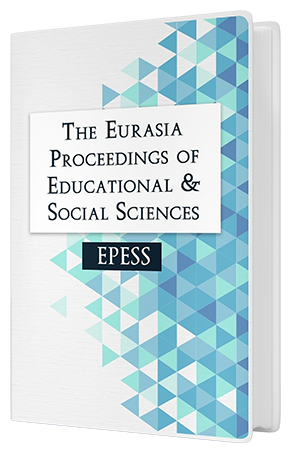Technology in Teaching, as an Empowerment of Innovative Education
DOI:
https://doi.org/10.55549/epess.1038712Keywords:
Technology, Language competence, Teaching process, Communication, innovationAbstract
The aim of this paper is to present an overview of the importance of teaching competencies, achieved through use of technology, so that the learning process is perceived as one of the pleasures offered during the process of education. Nowadays, in the pandemic conditions, education is facing great challenges. The education of students from online learning is another challenge, which puts in dilemma the teaching and learning process. We live in an era where teaching process is going through rapid changes, information sources have a wider scope of action and certainly the effects are visible. The implementation of technological innovations in education sector is a new challenge for students and teachers. Transitioning the teaching and learning process from the auditorium to home environment requires professionalism and dedication from the teachers, who should use a different approach to continue developing their academic preparation. Based on this point of view, we have treated the role of education in shaping the student and the society as well, considering the process in the new context, re-dimensioning the relationship between students and teachers, in the new conditions of subjects and inter-subjects' integration, bringing not only a new “face” of the curricula, but also the new role of the teacher in our schools. The global information we face every day is reflected in everyone's language and communication. The purpose of education is to prepare students to understand and actively participate in the process of critical and creative thinking. This study is based on a methodology that includes both quantitative and qualitative aspects. Quantitative, because this research has been extended to several schools in the city of Tirana, through surveys and questionnaires, to emphasize how much these technological innovations are being used in elementary, middle and high education. Qualitatively, the information is summarized through tables and charts.Downloads
Published
Issue
Section
License
Copyright (c) 2021 The Eurasia Proceedings of Educational and Social Sciences

This work is licensed under a Creative Commons Attribution-NonCommercial-ShareAlike 4.0 International License.
The articles may be used for research, teaching, and private study purposes. Any substantial or systematic reproduction, redistribution, reselling, loan, sub-licensing, systematic supply, or distribution in any form to anyone is expressly forbidden. Authors alone are responsible for the contents of their articles. The journal owns the copyright of the articles. The publisher shall not be liable for any loss, actions, claims, proceedings, demand, or costs or damages whatsoever or howsoever caused arising directly or indirectly in connection with or arising out of the use of the research material. All authors are requested to disclose any actual or potential conflict of interest including any financial, personal or other relationships with other people or organizations regarding the submitted work.




